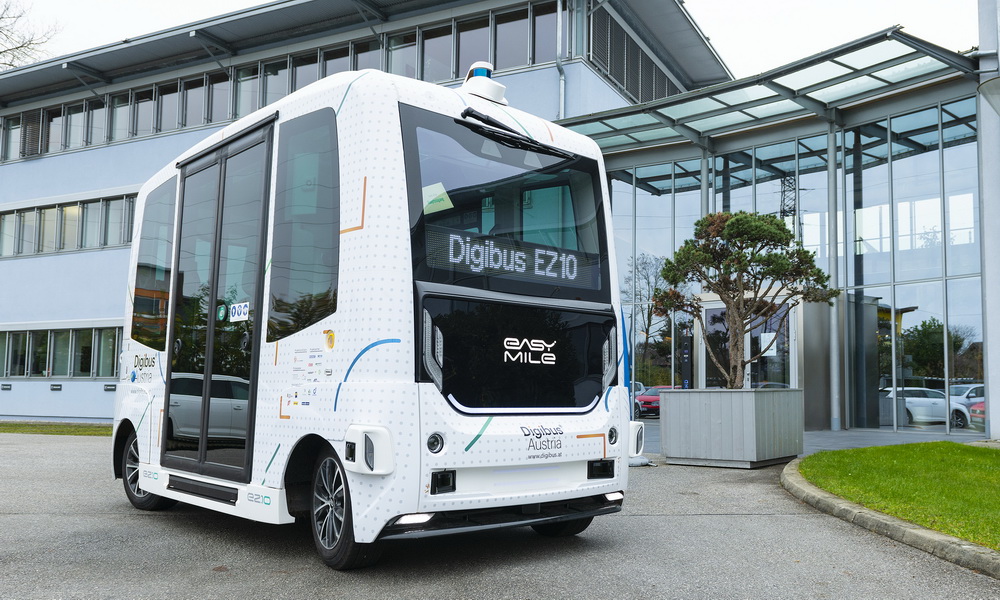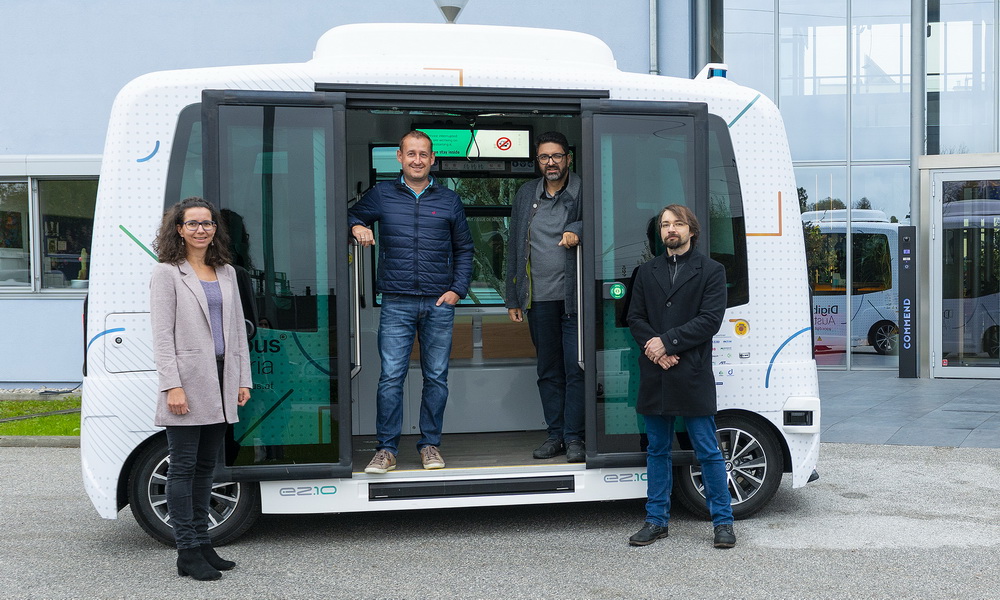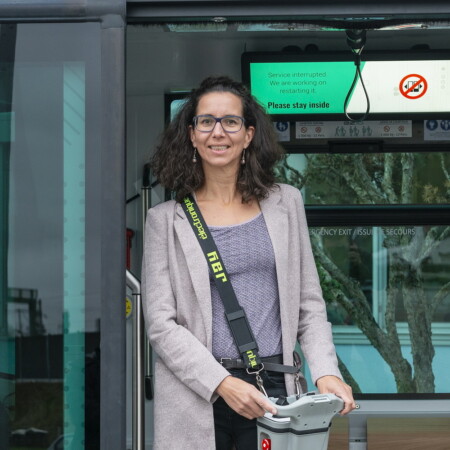
Game Changers Need Efficient Communication
In the Austrian lead project Digibus® Austria, research and business companies are testing and researching methods, technologies and models for the reliable and safe operation of automated vehicles for regional public transport. The Salzburg partners Salzburg Research, the University of Salzburg and Commend International presented newly integrated mechanisms for passenger interaction in preparation for completely driverless operation at the Commend test area in Salzburg at the beginning of November.

Since April 2018, the Digibus® Austria shuttle has had to prove itself time and again in a test operation. “Autonomous driving is becoming the absolute game changer for our mobility behavior – away from the private sphere and towards service. Automated shuttles can be an important feeder, especially for connecting rural areas to public transport”, says Salzburg Regional Transport Councilor Stefan Schnöll with conviction.

“We are still classifying the bus at level 3 on the technical scale for autonomous driving (‘conditional automation’). In order to create the prerequisites for level 4 (“high automation”), the automated Digibus® must communicate very clearly with its environment”, says Digibus® project manager Cornelia Zankl from Salzburg Research. That is why the passenger experience has been the subject of intensive research in recent years.
Communicative Driving Experience in the Automated Shuttle
Under the leadership of the Salzburg communications specialist Commend International, new methods, varieties and technologies of passenger interaction are being developed. These are specifically geared to the communication and information needs of passengers in the driverless shuttle and in the infrastructural environment (e.g. at bus stops) and form an essential part of the comfort and safety concept.
“In the Digibus project, we are specifically developing and testing multimedia methods and technologies to adapt automated driving to the needs of passengers for information, safety and help. Video and voice control play a central role,” explains Klaus Hirschegger, Digibus® project manager at Commend. “The focus must be on people and should never be at the mercy of technology”, adds Alexander Mirnig, researcher at the Center for Human-Computer Interaction at the University of Salzburg.



The newly integrated communication and information facilities in the Digibus® include the display of current real-time information on interactive touch monitors in the shuttle and at the stops (e.g. travel times and duration, details on tickets and connecting traffic, general information, etc. ) as well as the possibility of requesting help from a control center via a direct connection if necessary. This is made possible by the latest audio, video and integration technology, which is developed in the Commend laboratories and made suitable for automated vehicles – from the suppression of background noise to the use of fully disinfectable touch surfaces. The latest innovation from Commend, which already works in the prototype stage, is also being tested: the use of a contactless voice assistant that uses artificial intelligence to help clarify frequently asked questions.
Digibus® Austria is funded by the Federal Ministry for Climate Protection, Environment, Energy, Mobility, Innovation and Technology (BMK) as part of the “Mobility of the Future” research program.







